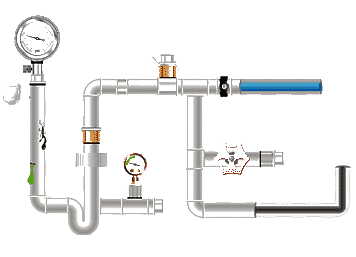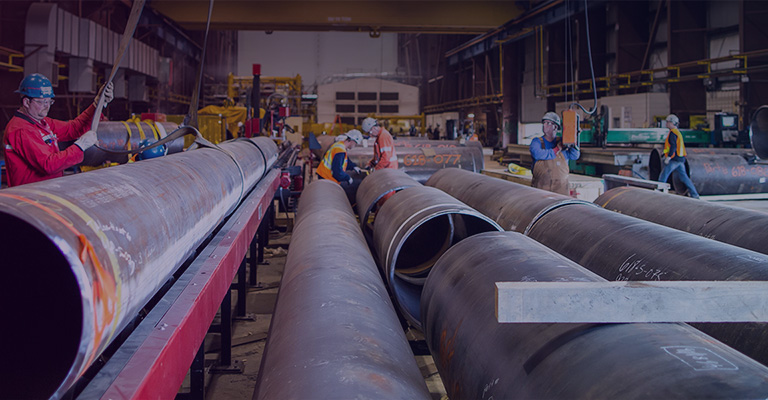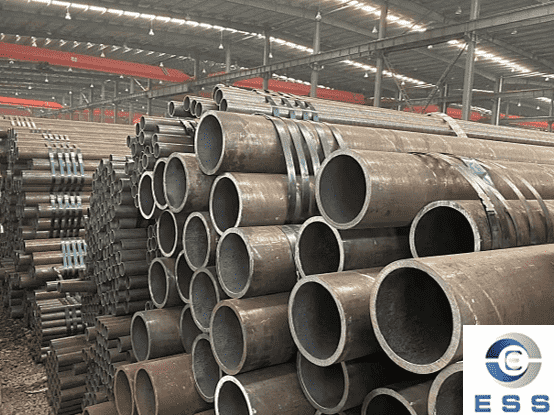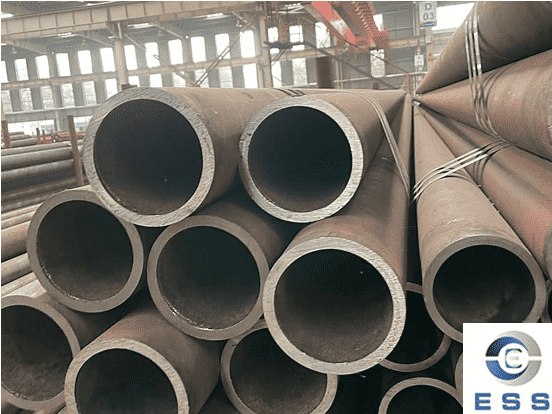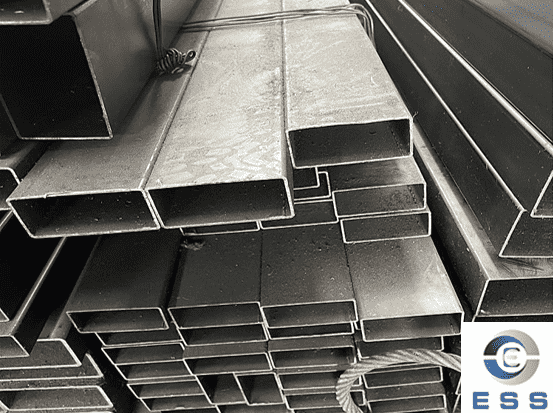Mild
steel pipe is abbreviated as "MS
pipe." Chemical
composition of MS pipe is carbon, silicon, manganese, phosphorus, and
sulfur, with a carbon content of less than 0.25%. It exhibits excellent
ductility, toughness, and strength, making it widely used in construction,
machinery, petroleum, water supply and drainage, and infrastructure
engineering. Understanding the weight of MS pipe is crucial for structural
design, transportation calculations, and project cost assessments.
What is Mild Steel Pipe?
MS pipe (mild steel pipe) is made from mild
steel and has the following properties:
1. Easy to weld and form
Suitable for various welding processes
(such as ERW and SAW).
2. Low cost
More economical than stainless steel and
alloy steel.
3. Excellent strength and toughness
Strong compressive and bending resistance.
4. Wide range of applications
Building support, pipeline transportation,
water well pipes, machinery manufacturing, scaffolding, etc.
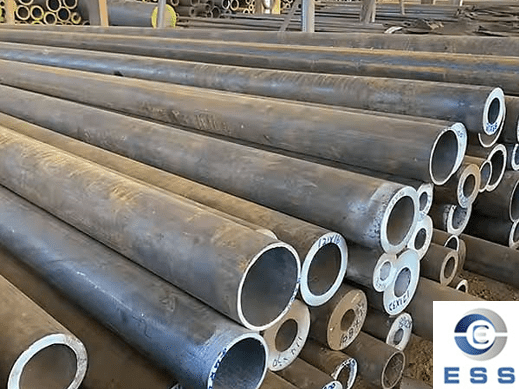
MS Pipe Size Chart
|
Outer Diameter
(mm)
|
ID
(mm)
|
Thickness in mm
|
Weight in kg/ meter
|
|
15
|
12.6
|
1.2
|
0.42 kg/ m
|
|
25
|
21
|
2.0
|
0.95 kg/ m
|
|
50
|
43.6
|
3.2
|
3.12 kg/ m
|
|
100
|
90
|
5.0
|
11.78 kg/ m
|
|
150
|
134
|
8.0
|
23.80 kg/ m
|
MS Pipe Weight Tolerances
|
Single MS Pipes
|
+ 10%
-8%
|
|
Medium & Heavy MS Pipes
|
±10%
|
|
10 Ton per quantity weight load
|
±7.5%
|
This means that there is a certain
allowable error between steel pipes from different manufacturers and different
batches.
MS Pipe Weight Chart in KG/Meter
The formula for calculating
the weight of mild steel pipe is:
Weight of mild steel pipe (g) = π × (outer diameter - wall thickness) × wall
thickness × length × density
The following chart shows the weight per
meter (kg/m) of light (Class A), medium (Class B), and heavy (Class C) mild
steel pipe in metric (mm) and imperial (inch) standards.
|
MS Pipe NB
|
OD
|
Light (Class-A) MS Pipes Weight
|
Medium (Class-B) MS Pipes Weight
|
Heavy (Class-C) MS Pipes Weight
|
|
Inch
|
mm
|
Inch
|
mm
|
Thickness in mm
|
kg/ meter
|
Thickness in mm
|
kg/ meter
|
Thickness in mm
|
kg/ meter
|
|
1/8"
|
3 mm
|
0.406
|
10.32
|
1.80
|
0.361
|
2.00
|
|
2.65
|
0.493
|
|
1/4"
|
6 mm
|
0.532
|
13.49
|
1.80
|
0.517
|
2.35
|
0.407
|
2.90
|
0.769
|
|
3/8"
|
10 mm
|
0.872
|
17.10
|
1.80
|
0.674
|
2.35
|
0.852
|
2.90
|
1.02
|
|
1/2"
|
15 mm
|
0.844
|
21.43
|
2.00
|
0.952
|
2.65
|
1.122
|
3.25
|
1.45
|
|
3/4"
|
20 mm
|
1.094
|
27.20
|
2.35
|
1.410
|
2.65
|
1.580
|
3.25
|
1.90
|
|
1"
|
25 mm
|
1.312
|
33.80
|
2.65
|
2.010
|
3.25
|
2.440
|
4.05
|
2.97
|
|
1.1/4"
|
32 mm
|
1.656
|
42.90
|
2.65
|
2.580
|
3.25
|
3.140
|
4.05
|
3.84
|
|
1.1/2"
|
40 mm
|
1.906
|
48.40
|
2.90
|
3.250
|
3.25
|
3.610
|
4.05
|
4.43
|
|
2"
|
50 mm
|
2.375
|
60.30
|
2.90
|
4.110
|
3.65
|
5.100
|
4.47
|
6.17
|
|
2.1/2"
|
65 mm
|
3.004
|
76.20
|
3.25
|
5.840
|
3.65
|
6.610
|
4.47
|
7.90
|
|
3"
|
80 mm
|
3.500
|
88.90
|
3.25
|
6.810
|
4.05
|
8.470
|
4.85
|
10.1
|
|
4"
|
100 mm
|
4.500
|
114.30
|
3.65
|
9.890
|
4.50
|
12.10
|
5.40
|
14.4
|
|
5"
|
125 mm
|
5.500
|
139.70
|
-
|
-
|
4.85
|
16.20
|
5.40
|
17.8
|
|
6"
|
150 mm
|
6.500
|
165.10
|
-
|
-
|
4.85
|
19.20
|
5.40
|
21.2
|
|
* Note: Weight is calculated using Mild
Steel Density 7850 kg/m³
|
Compare SCH 40, 80 and 160 MS Pipe
Weight Chart
Comparing the weight of SCH 40, SCH 80, and
SCH 160 mild steel pipes of different pressure grades.
"Schedule (SCH)" represents the
pipe wall thickness grade. Common standards are as follows:
SCH
40: Standard thickness, suitable for conveying
normal pressure fluids.
SCH 80: Thickened type, used in
high-pressure systems.
SCH 160: Extra-thick type, suitable for
extremely high pressure or deep well systems.
Recommendation: When selecting pipe, choose
the appropriate SCH grade based on the operating pressure, temperature, and
media type.
|
DN
|
Dia in mm
|
SCH160 (Length 6m/5.8m)
|
SCH80 (Length 6m/5.8m)
|
SCH40 (Length 6m/5.8m)
|
|
|
|
Wall Thickness
(mm)
|
Unit Weight
(kg/ piece)
|
Wall Thickness
(mm)
|
Unit Weight
(kg/ piece)
|
Wall Thickness
(mm)
|
Unit Weight
(kg/ piece)
|
|
1/4"
|
13.7
|
-
|
-
|
3.02
|
4.80
|
2.24
|
3.79
|
|
3/8"
|
17.1
|
-
|
-
|
3.20
|
6.60
|
2.31
|
5.04
|
|
1/2"
|
21.3
|
4.78
|
11.7
|
3.73
|
9.72
|
2.77
|
7.62
|
|
3/4"
|
26.7
|
5.56
|
17.4
|
3.91
|
13.2
|
2.87
|
10.14
|
|
1"
|
33.4
|
6.35
|
25.44
|
4.55
|
19.44
|
3.38
|
15.00
|
|
1-1/4"
|
42.2
|
6.35
|
33.66
|
4.85
|
26.82
|
3.56
|
20.34
|
|
1-1/2"
|
48.3
|
7.14
|
43.5
|
5.08
|
32.46
|
3.68
|
24.30
|
|
2"
|
60.3
|
8.74
|
66.66
|
5.54
|
44.88
|
3.91
|
32.64
|
|
2-1/2"
|
73.0
|
9.53
|
89.52
|
7.01
|
68.46
|
5.16
|
51.78
|
|
3"
|
88.9
|
11.13
|
128.1
|
7.62
|
91.62
|
5.49
|
67.74
|
|
3-1/2"
|
101.6
|
-
|
-
|
8.08
|
111.78
|
5.74
|
81.42
|
|
4"
|
114.3
|
13.49
|
201.24
|
8.56
|
133.92
|
6.02
|
96.42
|
|
5"
|
141.3
|
15.88
|
294.66
|
9.53
|
185.82
|
6.55
|
130.62
|
|
6"
|
168.3
|
18.26
|
405.36
|
10.97
|
255.36
|
7.11
|
169.56
|
|
8"
|
219.1
|
23.01
|
667.62
|
12.70
|
387.84
|
8.18
|
255.3
|
|
10"
|
273.0
|
28.58
|
1033.98
|
15.09
|
576.06
|
9.27
|
361.86
|
|
12"
|
323.8
|
33.32
|
1432.56
|
17.48
|
792.48
|
10.31
|
478.38
|
FAQ
1. What factors affect the weight of MS
pipe?
Major factors include:
Outer diameter (OD);
Wall thickness (WT);
Material density (which can vary slightly
between batches of steel);
Manufacturing process (ERW welded or
seamless hot-rolled).
2. Which standards specify the dimensions
and weight of mild steel pipe?
Major international standards include:
IS 1239 (Part 1): 2004 – general standard for mild steel pipe;
IS 3589: 2001 – standard
for steel pipe for water and ventilation;
ASTM A53 / A106 – American standard for carbon
steel pipe;
BS 1387 – British standard
for welded
steel pipe.









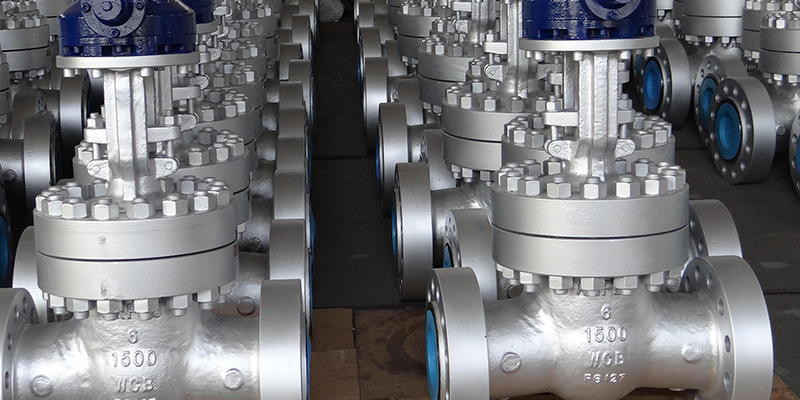
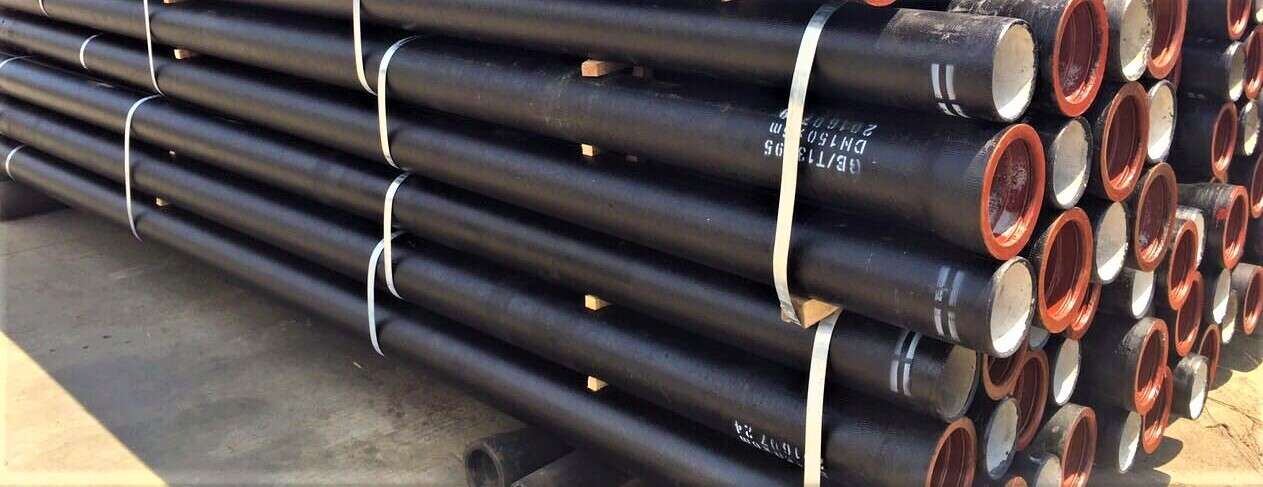


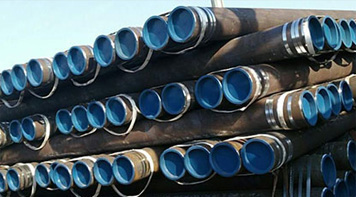 Eastern Steel Manufacturing Co.,Ltd not only improve product production and sales services, but also provide additional value-added services. As long as you need, we can complete your specific needs together.
Eastern Steel Manufacturing Co.,Ltd not only improve product production and sales services, but also provide additional value-added services. As long as you need, we can complete your specific needs together.
